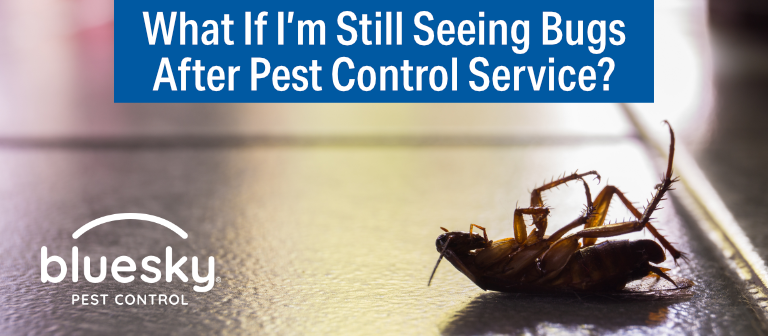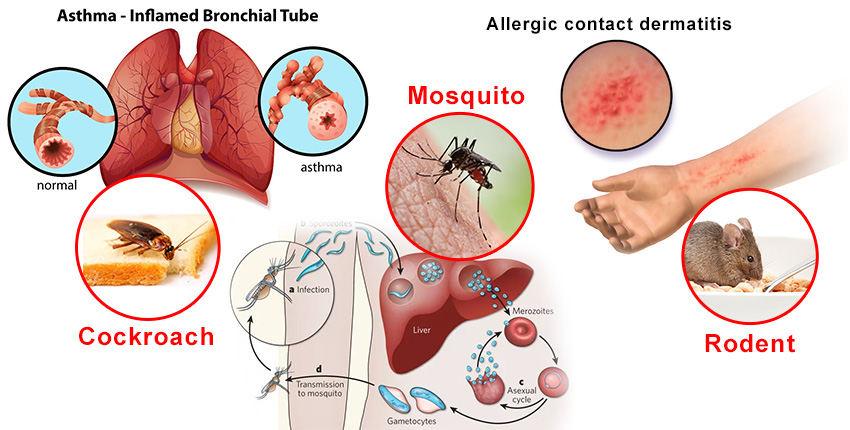The Facts About Eco Bed Bug Exterminators Dc Uncovered
Table of ContentsThe Best Guide To Eco Bed Bug Exterminators DcEco Bed Bug Exterminators Dc for BeginnersTop Guidelines Of Eco Bed Bug Exterminators DcGetting My Eco Bed Bug Exterminators Dc To WorkThe Eco Bed Bug Exterminators Dc Ideas
Since chemicals are poisonous, they are also potentially harmful to humans, pets, various other organisms, and the environment. People that utilize pesticides or regularly come in contact with them need to recognize the relative toxicity, potential wellness effects, and preventative actions to minimize exposure to the products they use. Threat, or danger, of utilizing pesticides is the capacity for injury, or the level of danger entailed in using a chemical under a provided set of problems.
Nonetheless, applicators can decrease or nearly remove direct exposure-- and therefore reduce risk-- by following the tag guidelines, utilizing personal protective clothing and equipment (PPE), and taking care of the pesticide effectively. Even more than 95 percent of all pesticide exposures come from facial direct exposure, largely to the hands and forearms. By putting on a set of unlined, chemical-resistant handwear covers, this kind of exposure can be virtually removed.
The hazardous impacts that occur from a solitary direct exposure by any kind of route of entry are described "severe results." The 4 paths of exposure are facial (skin), inhalation (lungs), dental (mouth), and the eyes. Severe toxicity is identified by checking out the dermal toxicity, inhalation poisoning, and dental poisoning of guinea pig.
The Single Strategy To Use For Eco Bed Bug Exterminators Dc
Acute poisoning is measured as the amount or concentration of a toxicant-- the a.i.-- called for to eliminate 50 percent of the animals in an examination populace. This measure is generally expressed as the LD50 (dangerous dose 50) or the LC50 (dangerous concentration 50). In addition, the LD50 and LC50 worths are based on a solitary dose and are recorded in milligrams of pesticide per kilogram of body weight (mg/kg) of the guinea pig or partly per million (ppm).
The lower the LD50 or LC50 worth of a pesticide item, the better its toxicity to humans and animals. Chemicals with a high LD50 are the least hazardous to people if used according to the instructions on the item tag. The chronic poisoning of a pesticide is figured out by subjecting guinea pig to lasting exposure to the energetic component.
The chronic poisoning of a pesticide is more hard than acute toxicity to identify through laboratory analysis. Products are classified on the basis of their relative intense poisoning (their LD50 or LC50 worths). Pesticides that are classified as highly hazardous (Poisoning Group I) on the basis of either oral, dermal, or inhalation poisoning must have the signal words DANGER and POISON printed in red with bed bug spray a head and crossbones sign prominently showed on the front panel of the package tag.
The severe (single dose) oral LD50 for chemical products in this group varies from a trace total up to 50 mg/kg. For instance, exposure of a couple of drops of a material taken by mouth can be deadly to a 150-pound person. Some pesticide products have simply the signal word risk, which tells you absolutely nothing about the acute toxicity, simply that the item can create extreme eye damage or extreme skin inflammation
The 10-Minute Rule for Eco Bed Bug Exterminators Dc
In this classification, the intense oral LD50 ranges from 50 to 500 mg/kg. A tsp to an ounce of this material might be fatal to a 150-pound person (exterminator near me). Chemical products identified as either slightly poisonous or relatively nontoxic (Toxicity Categories III and IV) are required to have the signal word care on the pesticide tag

All pesticide toxicity worths, consisting of the LD50, can be discovered on the item's Product Security Information Sheet (MSDS) - pest control Washington DC. Pesticide labels and MSDS can be acquired from retailers or manufactures. Additionally, a lot of items additionally know that can be found on the web. The signs of pesticide poisoning can range from a mild skin inflammation to coma or even death.
Since of possible health and wellness issues, pesticide customers and trainers should acknowledge the typical indications and signs of chemical poisoning. The results, or signs and symptoms, of chemical poisoning can be extensively specified as either topical or systemic.
10 Easy Facts About Eco Bed Bug Exterminators Dc Explained
Dermatitis, or inflammation of the skin, is accepted as the most commonly reported topical result associated with pesticide direct exposure. Some people tend to cough, hiss, or sneeze when revealed to chemical sprays.
This sign typically subsides within a few mins after an individual is gotten rid of from the direct exposure to the irritant. A reaction to a chemical product that creates a person not just to sneeze and cough yet likewise to create serious acute respiratory system signs and symptoms is much more most likely to be a real hypersensitivity or allergic response.
Systemic impacts are rather different from topical results. They typically occur away from the initial point of call as an outcome of the chemical being taken in right into and dispersed throughout the body. Systemic results usually consist of nausea or vomiting, vomiting, tiredness, headache, and intestinal conditions. In advanced poisoning situations, the person may experience modifications in heart rate, problem breathing, convulsions, and coma, which can cause death.